How to Make Stuffed Chicken Breasts: Cordon Bleu Edition
If you’re looking to make a restaurant-quality meal that’s easy to prepare and doesn’t require any fancy equipment, this Chicken Cordon Bleu is for you. In fact, it only requires one pan!
Our Chicken Cordon Bleu recipe can also be easily adapted to accommodate dinner guests with dietary restrictions like gluten-free or low-carb diets. And you can use these same techniques to try out a number of stuffed chicken breast recipes. Let’s get started!
1. Prepare the Chicken Breasts
Our Chicken Cordon Bleu recipe calls for whole boneless, skinless chicken breasts. The chicken breasts should ideally be around 8 oz. which makes for one large portion. If they’re much smaller, it will be harder to stuff the chicken, and if they’re too large it will be too big for one serving. Many times, whole chicken breasts at grocery stores are larger than 8 oz. so you may need to cut them down to size if necessary.
Next, we cut the chicken and pound it to an even thickness. The butterfly cut is a horizontal slit about halfway through the chicken. You want to cut almost through but leave it intact on one side. Then you can open the chicken breast like a book, and it resembles a butterfly, hence the name for this type of cut.

From here, you can pound the chicken using a meat mallet, or if you don’t have one, a heavy-bottomed skillet or pot works just as well. They don’t need to be pounded super thin, just enough to lay flat. We recommend covering the chicken with a sheet of plastic wrap before pounding them to keep the area clean and prevent raw chicken particles from splattering around the kitchen.
2. Stuff and Seal the Chicken
Now that the chicken breasts are prepped, it’s time to stuff them with our delicious fillings. Before filling, we brush the inside of the chicken breasts with Dijon mustard. It acts as barrier between the chicken and fillings, adds a ton of flavor, and helps keep the layers in place when you go to fold and seal the chicken.
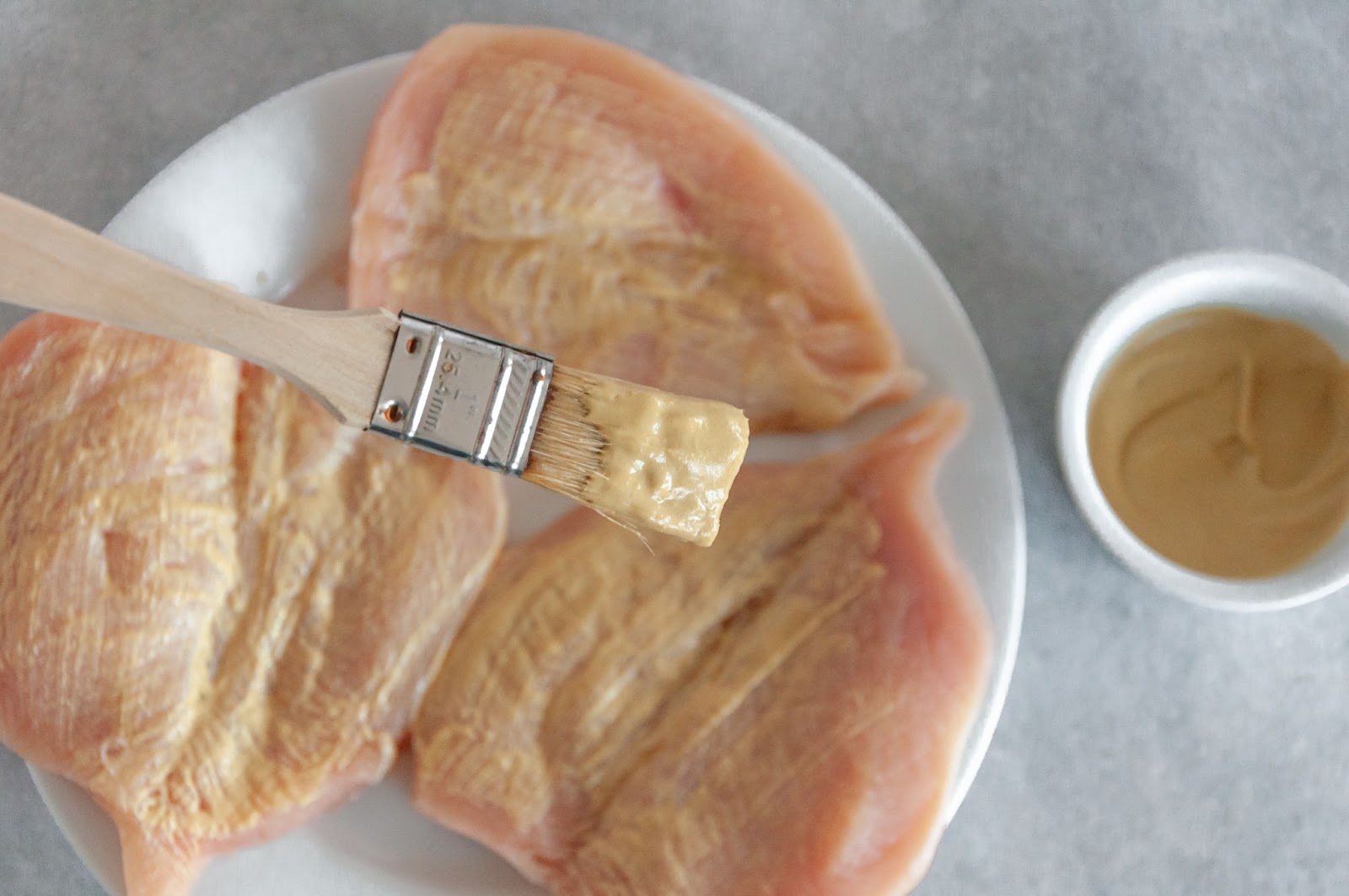
Speaking of which fillings to use, this recipe is totally flexible. Our Cordon Bleu recipe suggests using dry-cured Parma ham or any cooked ham, and either Swiss or Gruyere cheese to stay true to the classic recipe. But you can use any type of thinly sliced deli meat and cheese that you have!
To minimize leakage, the order of the fillings makes a difference. For our Chicken Cordon Bleu recipe, we recommend folding the ham around the cheese slices. It doesn’t have to be perfect—sometimes Parma ham in particular can be difficult to get full slices since it’s sliced so thinly, which makes it harder to wrap the cheese into neat little packets. But the barrier of the ham helps the melty cheese from leaking out of the stuffed chicken.
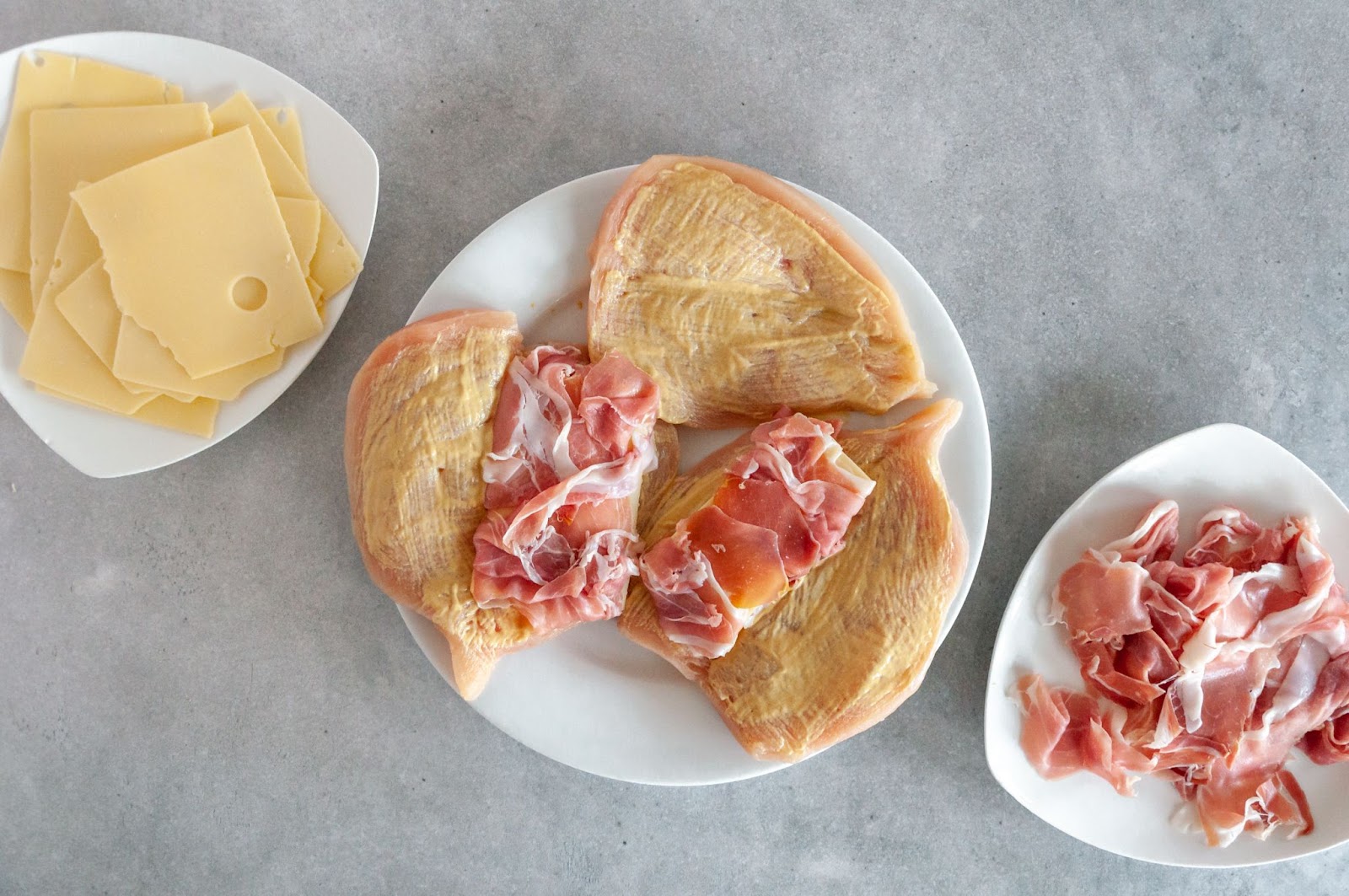
Now when it comes to sealing the fillings in the chicken breasts, we use toothpicks to hold it in place temporarily. Then when it gets cooked, the proteins will fuse together, and it will stay sealed so you can remove the toothpicks before serving. We soak the toothpicks in water for about 15-20 minutes before using so that they won’t burn when we cook the stuffed chicken. I try to place them at an angle, so they don’t get in the way of the chicken lying flat when pan-frying.

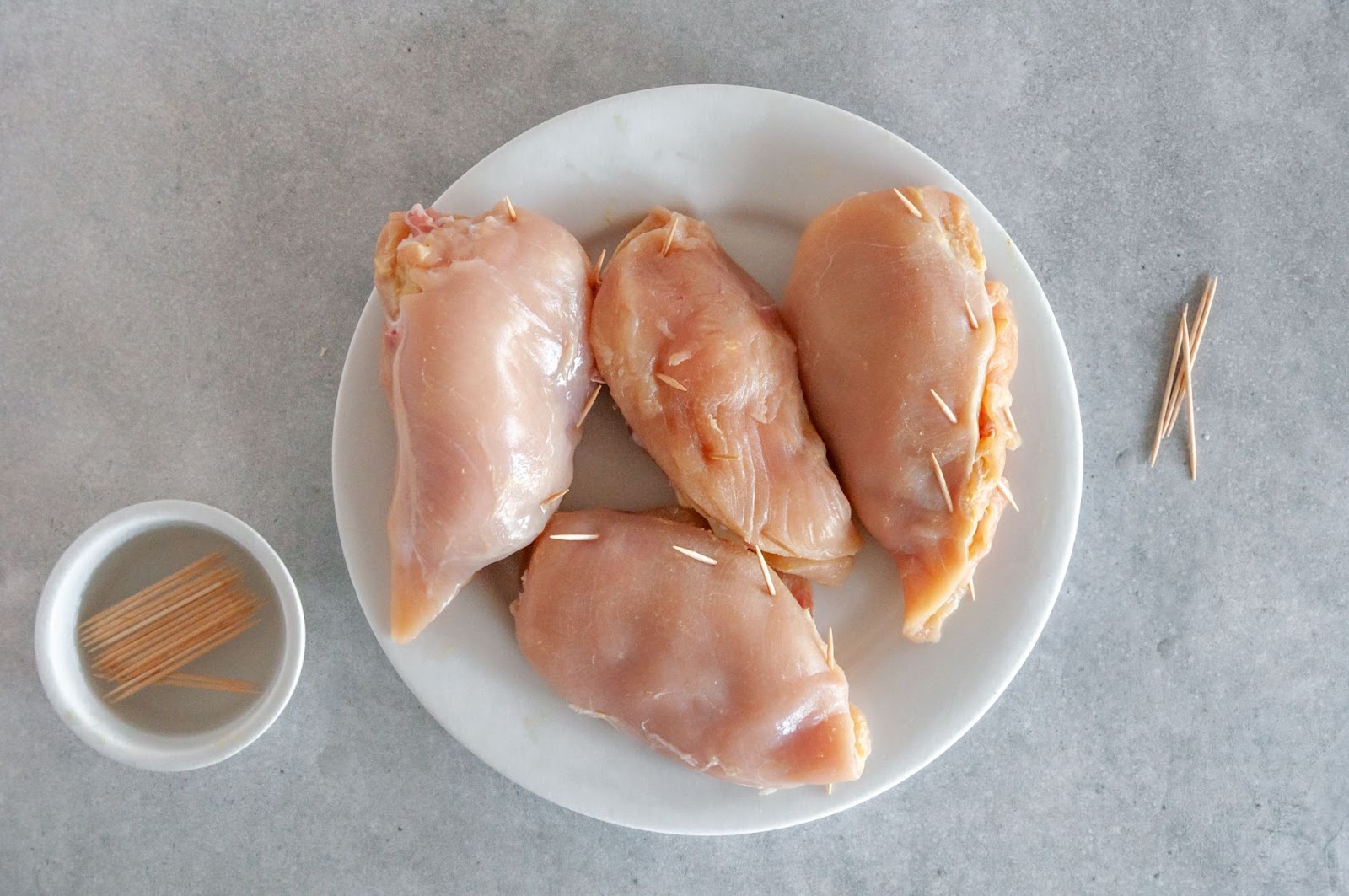
3. Dredge the Stuffed Chicken Breasts
Dredging chicken breasts is a technique that involves lightly coating the protein in a layer of seasoned flour. This technique is often used on regular chicken breasts in classic recipes such as chicken piccata and chicken marsala. But dredging can also be used on stuffed chicken breasts. It adds a lighter coating and is easier than a full standard breading procedure which uses breadcrumbs for the coating after first applying layers of flour and egg wash.
To dredge, combine the flour and seasonings in a shallow dish or a plate and dip each side of the stuffed chicken breast in the flour mixture. Or to save yourself some dishes, you can mix together the small quantities of flour and spices right on a piece of parchment or waxed paper.
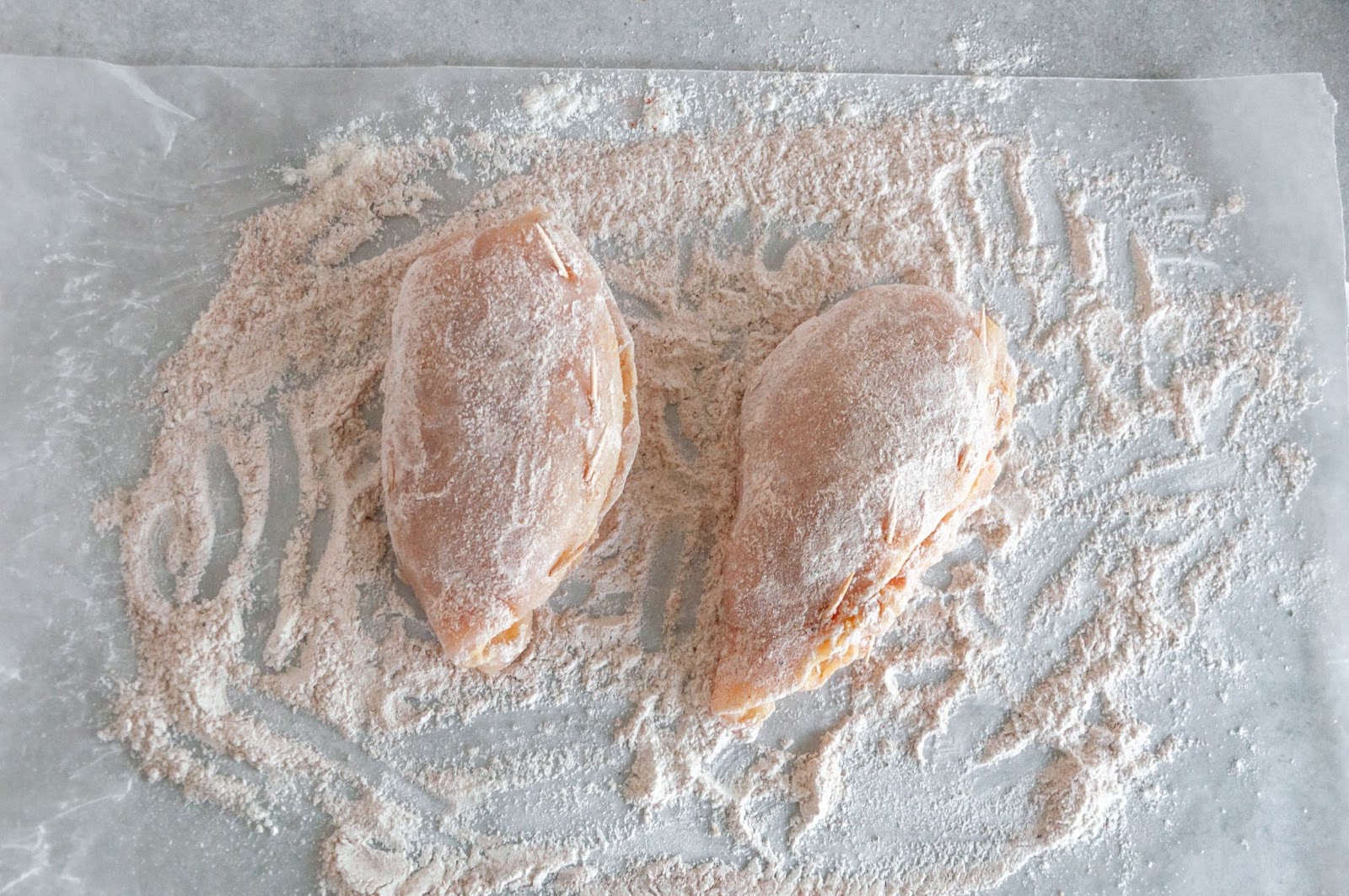
If you make these ahead of time, we recommend placing the chicken in the refrigerator at this point and let sit uncovered for about 30 minutes to 1 hour. This will help you get a crispier crust on the chicken. But if you don’t have time, it’s no problem at all—you can cook them right away and they will still turn out great.
4. Cook Chicken, Finish and Serve
For our Chicken Cordon Bleu recipe, we start by pan-frying the chicken and finish cooking in the oven. We recommend using a large oven-proof skillet so you can save on dishes and move the pan right into the oven. But if you don’t have an oven-proof skillet, you can start out in a skillet and move the chicken breasts to a sheet pan to finish cooking in the oven.
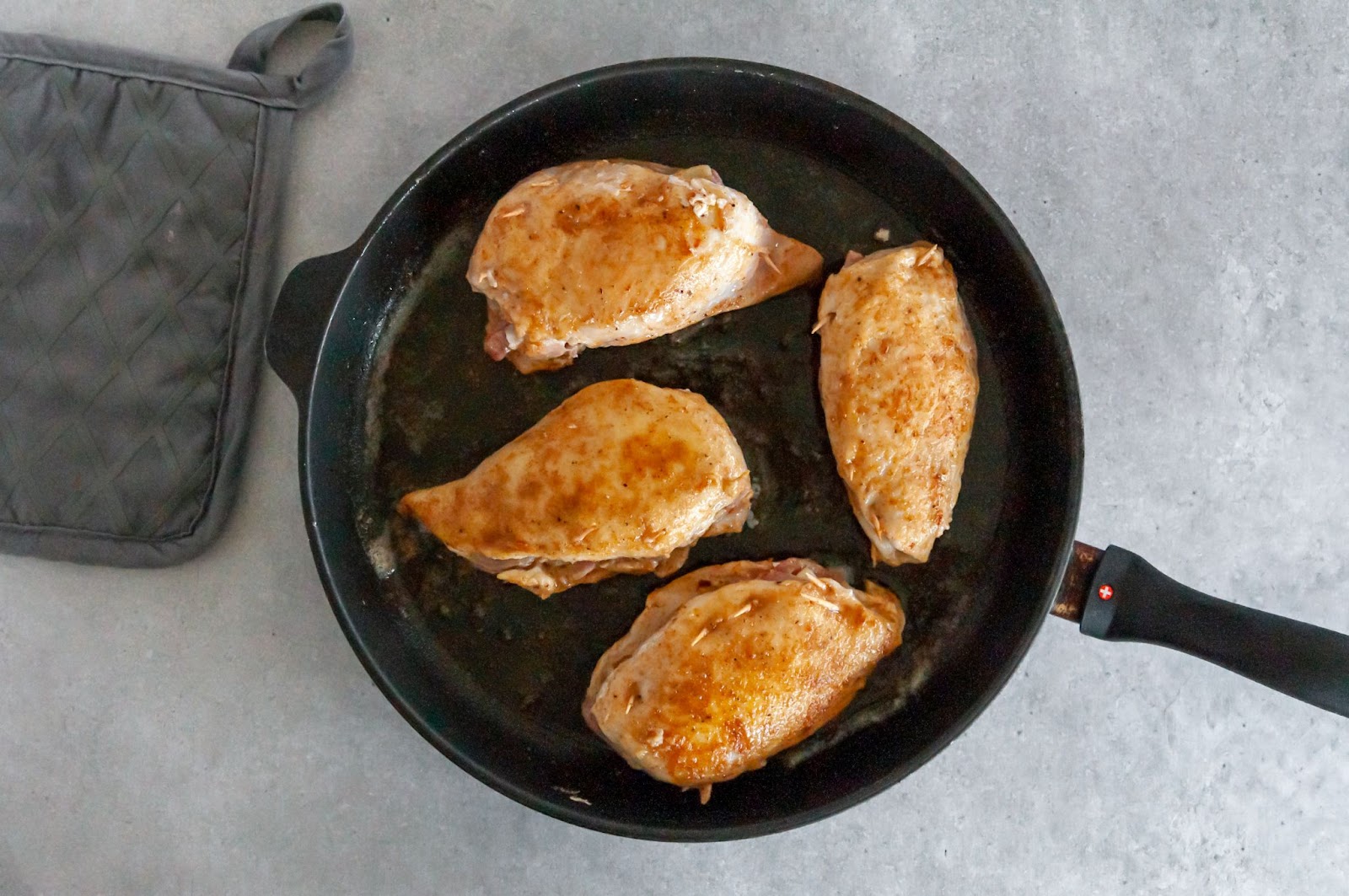
When frying the stuffed chicken breasts, we like to use a combination of butter and oil. Butter adds great flavor but burns easily, so adding a bit of oil to the butter helps prevent that. We love avocado oil for its health benefits but any neutral oil with a high smoke point works with this recipe (i.e. canola, vegetable, etc.). Then, when pan frying the chicken, use a spoon to continuously baste the chicken with the butter mixture as it browns. This will help the chicken brown evenly and adds great flavor!

When it comes to stuffed chicken breasts, it can be difficult to know when they’re done. You want to make sure the filling is warmed through, so it may take longer than 10 minutes in some cases, especially if the chicken breasts are on the thicker side or if you use a lot of filling. The easiest way to know when the chicken is done is to use an instant-read thermometer. Stick the thermometer in the thickest part of the chicken—it should register 165 degrees.

That’s it! When it’s done cooking, serve this Chicken Cordon Bleu with extra Dijon on the side or fresh lemon zest to enhance the flavors. Make sure to remove the toothpicks before serving! Once you’ve mastered this recipe, you can use it as a base for any stuffed chicken recipe. Try different flavors and fillings using the same tips and techniques outlined above.
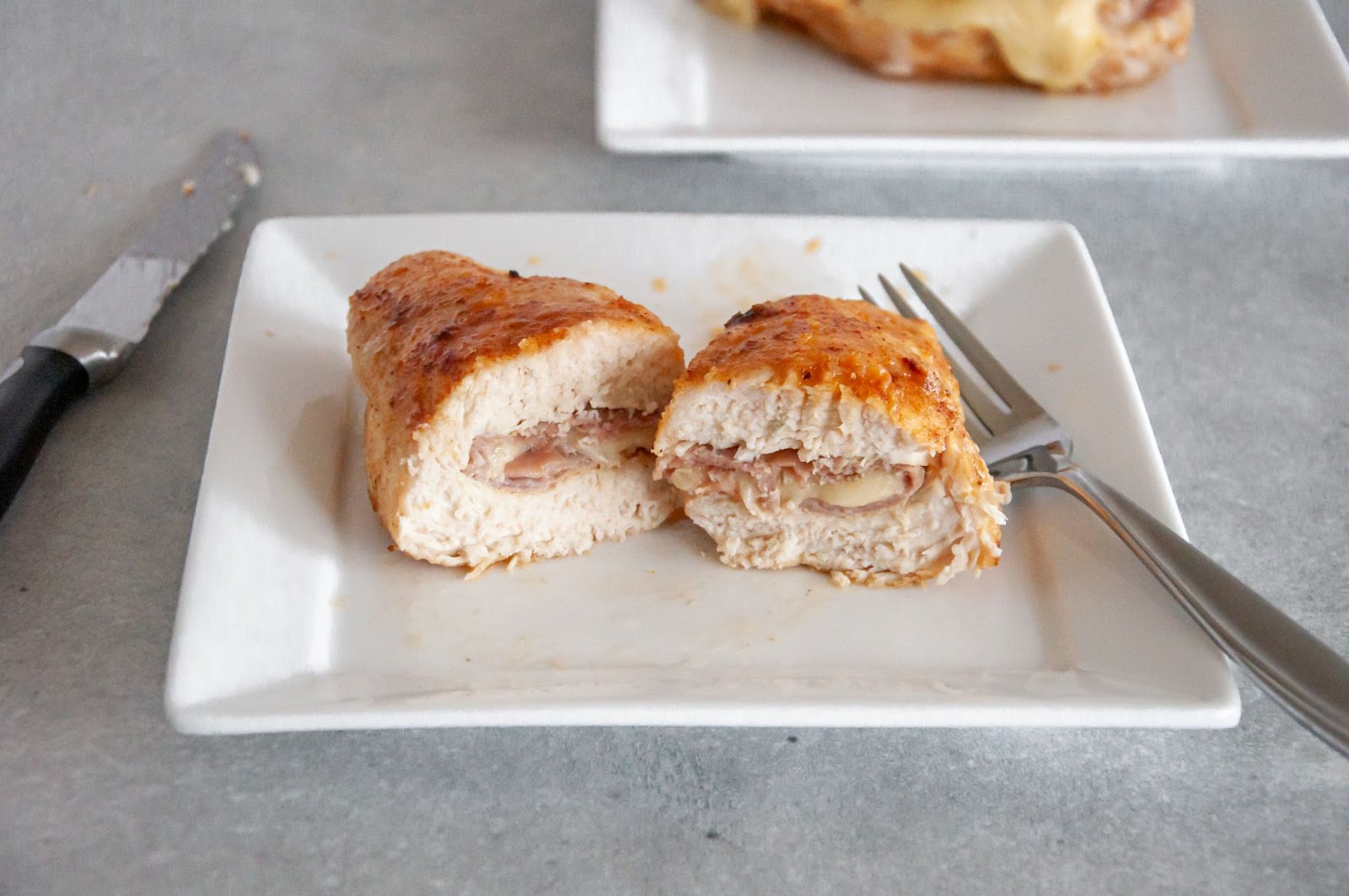
5. Give it a go!
When you're ready to get stuffin’, try our BigOven Original recipe for Chicken Cordon Bleu. Ready to serve and enjoy in just 45 minutes!






